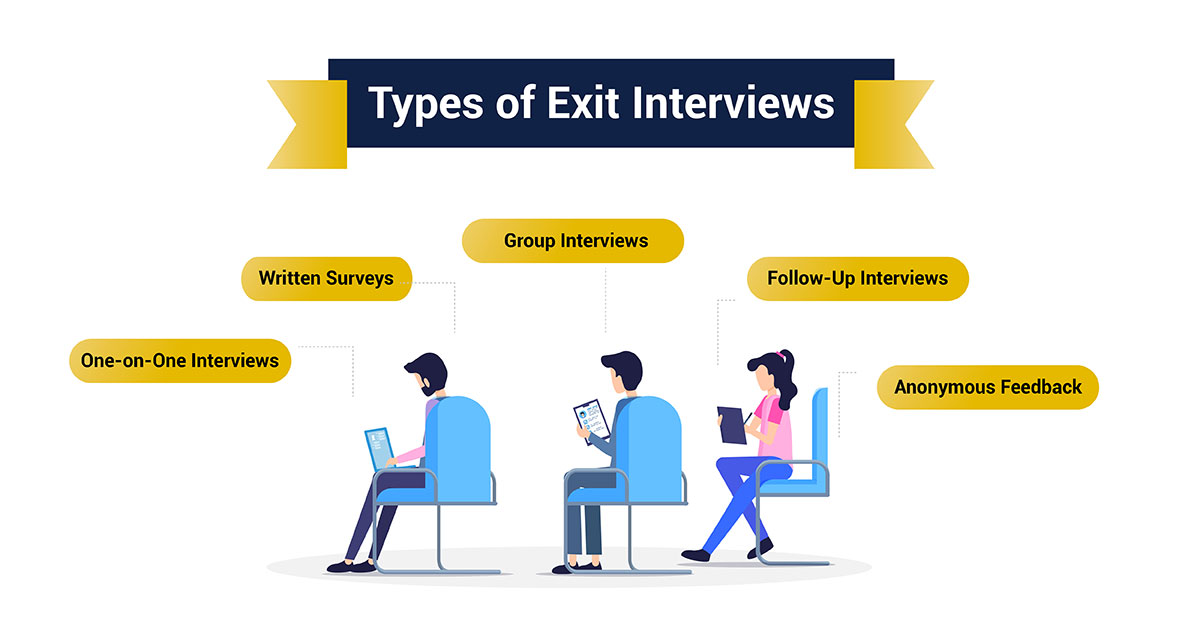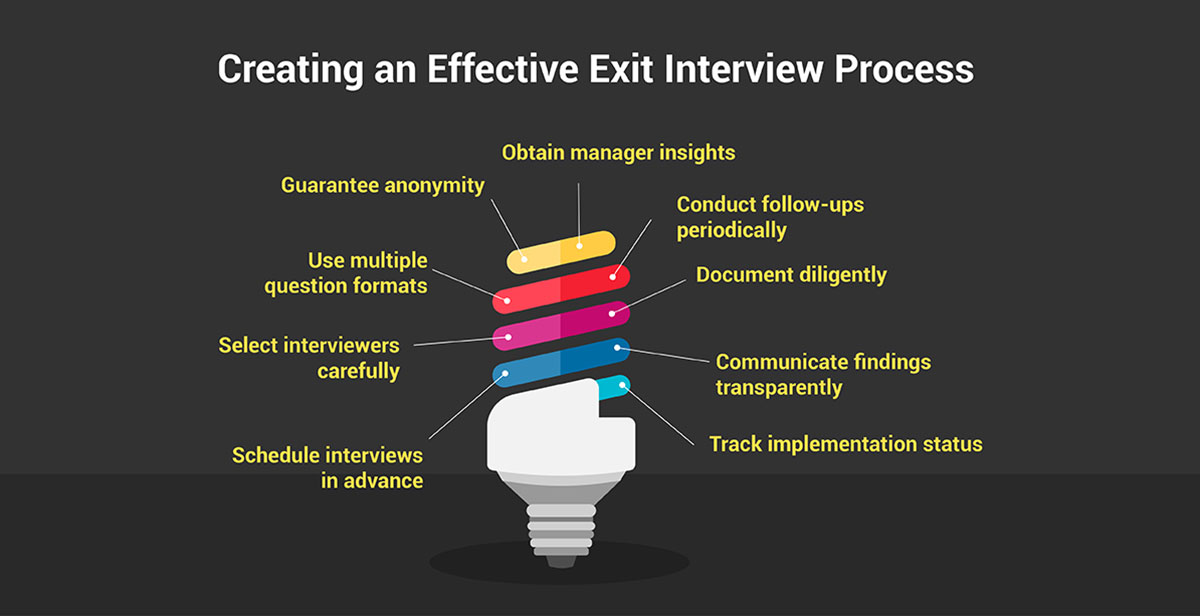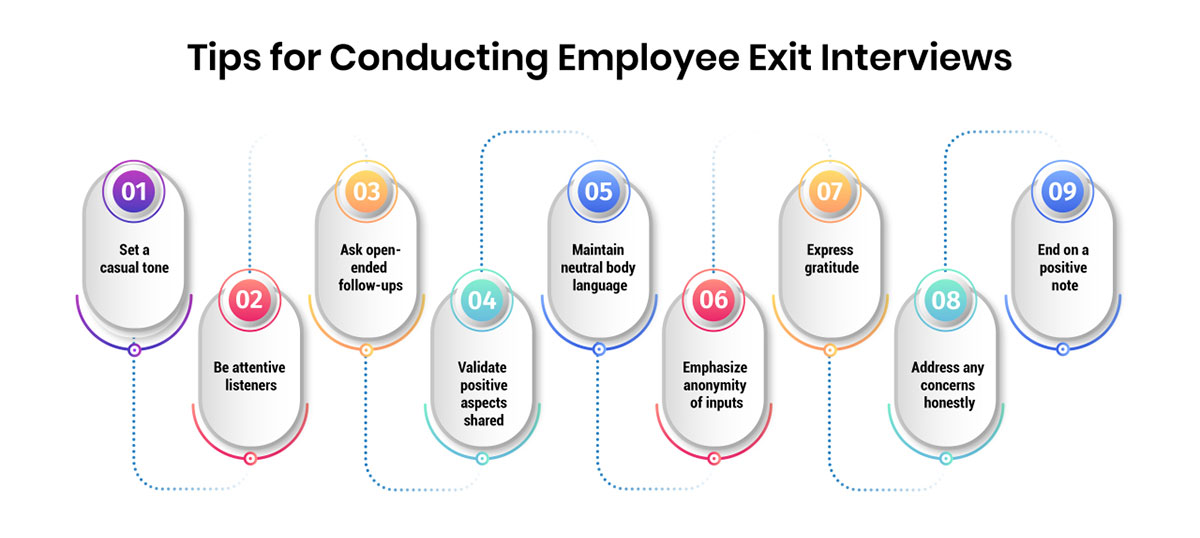A Comprehensive Guide to Effective Exit Interview Analytics
July 05, 2024

Exit interviews have the potential to be a gold mine of organizational insights if organizations leverage exit interview analytics to truly unlock their value. When done right, exit interviews can offer a window into the employee experience and valuable exit data that fuel continuous improvement. However, far too often, exit interviews are treated as a checkbox HR process rather than a strategic opportunity. This is where exit interview analytics comes in - by comprehensively collecting, analyzing, and making sense of exit data, organizations can extract actionable employee insights, identify patterns, and spot issues and opportunities for enhancing employee satisfaction and retention.
This article delves into how organizations can effectively tap into the treasure trove of exit interview analytics. We will explore best practices for conducting exit interviews and gathering comprehensive exit data. We will then demonstrate how to analyze this data using analytical techniques to glean valuable organizational insights. Finally, we will discuss how organizations can leverage these insights by integrating them into their strategic planning and tactics to continuously improve the employee experience, engagement, and overall retention.
What is an Exit Interview?
An exit interview is a meeting that is conducted by an organization with an employee who is leaving their job. The purpose of an exit interview is to gather feedback from departing employees about their overall experience working at the organization. This includes learning about their level of satisfaction with various factors like their manager, work environment, company culture, opportunities for growth, and more.
Exit interviews help organizations understand the reasons behind an employee’s decision to resign. The insights gained can then be analyzed to identify patterns, recognize potential areas of improvement, and take corrective actions to boost employee retention and engagement.
The Basics of Exit Interviews
At their ?ore, exit interviews serve as an opportunity for open communication between employers and departing staff. They provide a platform for exiting personnel to candidly share both positive and negative aspects of their tenure. From the employer’s perspective, exit interviews are a means to glean first-hand observations and suggestions directly from the horse’s mouth.
More fundamentally, they allow organizations to check in, show appreciation, and bid farewell in a meaningful way. Exit interviews are a two-way street that cultivates transparency while fostering an environment of psychological safety for honest feedback.
Types of Exit Interviews
There are a variety of formats in which exit interviews can be conducted:

-
One-on-One Interviews: A personal interview conducted face-to-face between the exiting employee and usually a representative from the human resources department. This traditional method allows for more conversational exchange and reading of vocal cues and body language. However, it can be time-consuming to schedule for every departing staff.
-
Written Surveys: A written or online questionnaire is distributed for departing employees to fill out independently. While often more scalable than one-on-one meetings, it lacks the interactivity of discussion. Careful drafting of clear and thoughtful questions is needed.
-
Group Interviews: Departing employees may participate in an exit interview as a group with HR representatives. This makes the process more efficient. However, some staff may feel less comfortable publicly offering candid feedback.
-
Follow-Up Interviews: An initial interview is conducted near the exit date, followed by another a few months later. This two-step approach provides perspective over time as initial emotions subside. However, it is more resource-intensive.
-
Anonymous Feedback: Online questionnaires or exit portals allow anonymous responses. This encourages honesty but removes the human connection and prevents clarifying questions.
The format chosen should consider the organization’s culture, resources, and goals for the exit interview process. No singular approach is ideal for all contexts. A hybrid model combining different styles may garner the most insightful feedback.
Importance of Conducting Exit Interviews
Exit interviews are an important tool that all employers should aim to fully leverage as they offer numerous significant benefits:
-
Feedback for Improvement: They provide a wealth of data directly from recently departed employees on why they resigned, their job satisfaction levels, and suggestions for enhancing the workplace. This highlights existing issues and areas with room for growth.
-
Predict Attrition: Common or consistent reasons for leaving that emerge could predict broader attrition trends if left unaddressed. Early intervention is then possible.
-
Benchmark Standards: Collection and analysis of exit interview insights allows an organization to benchmark itself against industry/market standards on retention rates. Gaps can be identified and closed.
-
Enhance Reputation: By demonstrating they value even former employees’ inputs, the conduct of exit interviews boosts an employer’s reputation as a good place to work. This aids future recruiting efforts.
-
Aid Retention Strategies: Identification of retention challenges enables the creation of tailored strategies to better engage, motivate, and retain current staff through improved workplace culture and policies.
-
Cost Savings: High turnover is costly due to expenses associated with recruitment, onboarding replacements, disruption to operations, etc. Exit interviews help stop avoidable attrition by curbing its root causes.
Overall, conducting exit interviews is advantageous to both departing employees and their employers. Regular practice of this insightful process has many tangible and intangible organizational benefits if insights are properly leveraged.
The Role of Analytics in Exit Interviews
To truly capitalize on the exit interview process, organizations must go beyond simply conducting interviews. They need robust exit interview analytics, which involves systematically collecting, examining, and reporting on interview feedback data. Some valuable ways analytics can elevate exit interviews include:
-
Gather Comprehensive Data: Standardized questionnaires ensure the collection of both qualitative and quantitative data elements like ratings, reasons for leaving, text feedback on specific aspects, etc., from all existing employees.
-
Ensure Data Privacy: Anonymization and secure storage of confidential response information as per privacy regulations builds trust with participants.
-
Identify Trends and Patterns: Through analyses like frequency/distribution of reasons cited or sentiments expressed, trends over time periods and across groups/attributes become apparent.
-
Benchmark Against Standards: Skill Gap and SWOT analysis compare internal exit data with industry benchmarks on attrition, engagement, and other metrics to recognize competitive disadvantages.
-
Pinpoint Actionable Insights: Deeper diagnostic analyses uncover root causes, correlations, and multilayered interactions between different factors to yield targeted evidence-based recommendations.
-
Measure Impact of Improvements: Retention and related metrics pre-and post-implementation of suggested changes demonstrate returns on investments in initiatives.
When exit interviews are coupled with strategic analytics, they evolve from a checking-the-box exercise into an impactful feedback mechanism that truly drives measurable organizational performance improvements.
Creating an Effective Exit Interview Process
Establishing a consistent methodology or process is important to optimize exit interviews:

-
Schedule interviews in advance: Send invites to existing employees at least 2 weeks prior along with a list of topics for discussion to give them time to prepare.
-
Select interviewers carefully: Train dedicated interviewers who can put departing staff at ease and engage them respectfully and objectively.
-
Use multiple question formats: Balance closed-ended ratings, rankings, and open-ended questions eliciting specific examples and suggestions.
-
Guarantee anonymity: Reassure honest, candid feedback won’t be traced to individuals to get truly unfiltered inputs.
-
Obtain manager insights: Pull feedback on a manager’s leadership indirectly through questions to gather a balanced perspective.
-
Conduct follow-ups periodically: Repeat interviews months later to capture any retrospective thoughts and check the impact of implemented changes.
-
Document diligently: Record inputs uniformly to allow comparisons and extract overarching patterns instead of isolated issues.
-
Communicate findings transparently: Cascade summaries of action points identified to staff without revealing sensitive details to build trust.
-
Track implementation status: Monitor progress on developing solutions and their effectiveness over time for continuous assessment and future planning.
Standardizing and refining the exit interview methodology in this manner aims to maximize buy-in while generating the most meaningful and actionable intelligence.
Tips for Conducting Employee Exit Interviews
Several best practices can help elicit open and productive discussions during actual exit interview sessions:

-
Set a casual tone: Express appreciation, ask why they are leaving empathetically, and build rapport to put them at ease from the outset.
-
Be attentive listeners: Make eye contact, confirm understanding through paraphrasing, and avoid interrupting their perspective.
-
Ask open-ended follow-ups: If a reguous statements.
-
Validate positive aspects shared: Acknowledge the organization’s strengths to impart a balanced view is being obtained.
-
Maintain neutral body language: Nod understandingly without frowning or displaying defensiveness even to negative sponse warrants elaboration, probe respectfully for examples, timeline, or reframe ambi feedback to assure comfort.
-
Emphasize anonymity of inputs: Periodically reassure their inputs’ confidential use helps gather candid thoughts without filtering.
-
Express gratitude: Thank them sincerely for their time and for sharing invaluable feedback that will aid improvements benefitting future employees.
-
Address any concerns honestly: If queries arise regarding processes, communicate intentions to study and address problems transparently.
-
End on a positive note: Briefly recaps key highlights constructively while wishing them the very best in future endeavors to maintain goodwill.
Adhering to these best practices fosters a supportive environment where departing staff feel motivated to share transparently to ultimately benefit the organization.
Exit Interview Dos and Don’ts
To conclude, here are some essential dos and don’ts for effective exit interviewing:
Do’s
- Do start interviews promptly as scheduled to respect people’s time.
- Do maintain neutral body language and avoid being visibly defensive.
- Do listen attentively and probe for examples to understand perspectives fully.
- Do thank participants sincerely for candid inputs benefitting the organization.
- Do keep an open yet discreet approach to address any organizational concerns.
- Do document discussions systematically after each interview session.
- Do maintain anonymity and confidentiality of all responses provided.
Don’ts
- Don’t directly challenge or argue with feedback shared, even if you disagree.
- Don’t dwell on isolation issues but seek overarching themes and lessons.
- Don’t make promises that cannot be kept, such as rehiring or reversing decisions.
- Don’t disclose interview details or attribute feedback to specific individuals.
- Don’t appear distracted or multitask if conducting interviews remotely.
- Don’t put off interviews indefinitely after the exit date, as recollections may fade.
- Don’t circulate feedback broadly but handle it discreetly through proper channels.
The Continuously Evolving Landscape
As the workforce and their expectations evolve rapidly, exit interview analytics have advanced, too. New techniques emerge while the core philosophy of creating value from data remains. Here are some future trends:
-
Predictive attrition models: Greater predictive accuracy using AI and broader contextual data.
-
Embedded exit interviews: Offering digital, mobile-first exit interviews anytime, anywhere for higher response rates.
-
Continuous listening: Enabling ongoing engagement surveys and listening posts even post-exit.
-
Real-time feedback loops: Automating insights dissemination and improvement tracking within organizations.
-
Experience benchmarking: Aggregating exit data across similar firms on anonymized industry platforms.
Staying ahead of such evolving capabilities will help optimize exit programs continuously and extract more nuanced learnings critical to talent management maturity. Embracing emerging best practices ensures exit interview analytics remains a strategic advantage.
Conclusion
In conclusion, treating exit interviews and the rich exit data they provide as mere compliance exercises discounts their true value. Organizations that powerfully tap into exit interview analytics position themselves to continuously improve employee experiences, reduce unwanted turnover, and set the benchmark for talent management excellence. It is truly a treasure trove worth mining to amplify organizational success over the long run.



